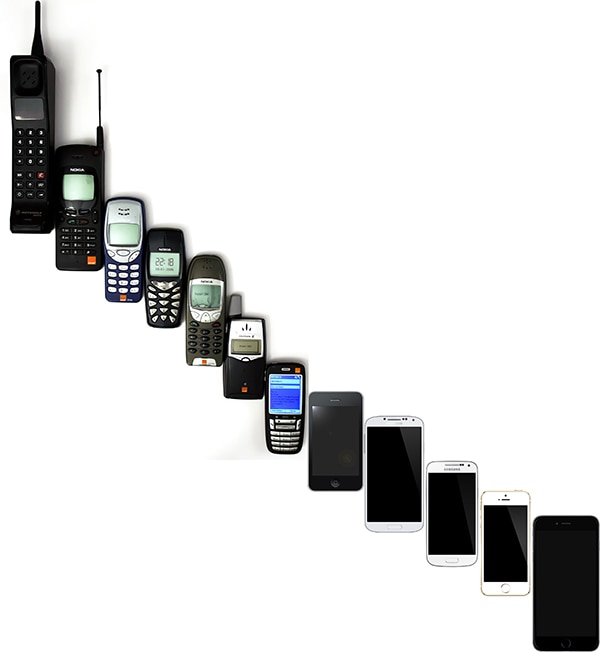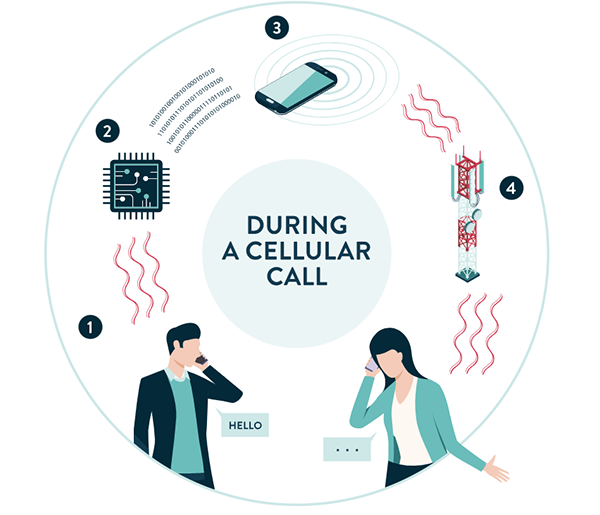Retro Tech - 50 Years Since the “Brick"
2023-11-10 | By Antonio Velasco
What is “The Brick?”
These days, it wouldn’t really surprise me if children didn’t know what a flip phone is–much less its predecessor, the brick phone. Just the other week, I was asked, “What’s a flash drive?” by a middle schooler I was mentoring for a STEM competition. I think it’s a fair assessment to say that brick phones have slowly moved into oblivion with today’s technology moving at such a rapid pace with new iPhones being pumped out every year. Technology like touch screens or Face ID routinely are referred to as revolutionary, but what really changed the world was the advent of the mobile phone. Brick phones, like the Motorola DynoTac, don’t often get the credit that they deserve, and they deserve a spotlight on their design, innovation, and virtual creation of the mobile phone market.
Before you were able to walk and talk, you either had to have a few nickels in your pocket for a payphone or wait until you got home. Phones had to be physically connected and wired to work because cellular towers or networks did not exist. The lines had to physically carry electronic pulses to transmit your voice and receive sound, creating a huge challenge for anybody who wanted to get on a call while on a drive home. Analog radio communication, which saw an enormous uptake in World War 2, proved to be the spark that pushed companies to develop mobile phones.

And thus in 1973, the Motorola DynoTac, which we affectionately call the brick phone, was born. It was huge, being almost twice as big as most people’s hands. It wasn’t the type of phone you’d carry on you, especially with its limited talk time of 30 minutes per 10-hour charge, but at the time it was groundbreaking. Never before was such a capability available to the public, and even though commercially available analog cell networks weren’t even available yet, the fact that it was a possibility made waves. It began to be sold in 1983 after further development and cell networks started to pop up, and the rest is history. Anybody who took a call on the go was seen holding up a huge piece of cream-colored plastic to their ear.

That’s cool and all, but how does it work?
The way that the first cell phone would operate is similar to our phones today. Wired phones take your voice and pulse it as an electrical signal through the connected landline cables. Wireless phones do this utilizing waves. It would take our voice and transform it into electrical signals, which a chip would then modulate into a radio wave to send off to a cell tower. To hear the other voice, your phone just reverses the process. Although it’s important to note that a lot has changed since then, notably the fact that the 1G network used back then, AMPS, is a lot different than the 5G network, the concept largely remains the same.

Outside of the innovation for making more efficient and faster data rates, the cell phone has constantly become smaller and smaller due to microchips. The brick phone needed to be that big as the component that would perform the wave modulation part wasn’t very small at the time. However, as microelectronics were developed, specifically MMIC chips, the size shrunk dramatically. Suddenly you didn’t need huge PCB boards to transform your voice into electrical signals and eventually waves, and thus, the brick phone became irrelevant. Back then, the name of the game in that arena was to fit as much capability and power as you could into a very small area as the Brick’s size was largely impractical.
Where we are today
The Brick’s successor was the flip phone, whose microchips allowed the form factor to go from something you’d carry in a briefcase to something you could slip into your pocket. Nokia and Blackberry phones popped up everywhere and the “Brick” became nothing more than something your father once owned. But eventually, even flip-phones started to fade away as we moved into the smartphone era when Steve Jobs showed up. It’s almost comical to believe that we made such a huge leap in just 50 years. It just makes you wonder what will come after the smartphone, and if my kids would possibly laugh at the fact that I used to carry around such an obsolete piece of technology. Who knows what will come next, but for now let’s wish the original good old brick a happy 50-years and feel happier that it retired sooner than later.
Have questions or comments? Continue the conversation on TechForum, DigiKey's online community and technical resource.


